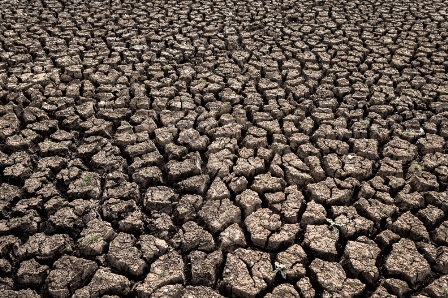In this article, we will delve into four practices – operating wind farms, clear cutting, flood irrigation, and overfishing – to evaluate their sustainability and environmental impacts. Each practice has its own unique characteristics and consequences, both positive and negative. By the end of this article, you’ll gain a deeper understanding of these practices and their implications for our planet.
Sustainable practices play a pivotal role in our efforts to protect the environment and ensure a healthier planet for future generations. Let’s examine these four practices and assess their sustainability.
Operating Wind Farms
operating wind farms are a sustainable practice that offers a clean and renewable source of energy. They reduce greenhouse gas emissions, decrease our reliance on fossil fuels, and provide economic benefits to local communities. With ongoing improvements in technology and infrastructure, wind farms have a promising future in the global transition to sustainable energy sources.
Harnessing the Power of the Wind
Wind farms are comprised of multiple wind turbines strategically placed in locations with consistent and strong wind patterns. These turbines have blades that capture the kinetic energy of the wind and convert it into electricity.
2. Clean and Green Energy
One of the most compelling aspects of operating wind farms is their contribution to clean and green energy production. Unlike fossil fuels, wind turbines produce electricity without emitting greenhouse gases or other harmful pollutants. This significantly reduces the carbon footprint associated with energy generation.
3. Reducing Dependence on Fossil Fuels
Wind farms play a crucial role in reducing our dependence on finite fossil fuels, such as coal, oil, and natural gas. By harnessing the power of the wind, we can generate electricity sustainably, decreasing the need for non-renewable energy sources.
4. A Renewable Resource
Wind is an abundant and renewable resource. It will continue to be available as long as the Earth’s atmosphere exists. This makes wind farms a long-term, sustainable energy solution.
5. Local Economic Benefits
The construction and maintenance of wind farms provide employment opportunities in local communities. Additionally, landowners who lease their land for wind turbines can generate income, contributing to the local economy.
6. Challenges and Solutions
While wind farms offer numerous benefits, they also face challenges. These include intermittent wind patterns and potential impacts on local wildlife. However, ongoing research and technological advancements aim to address these issues and make wind energy even more sustainable.
7. The Future of Wind Farms
As technology continues to advance, the efficiency and capacity of wind turbines are expected to increase. This will make wind farms an even more attractive and sustainable option for meeting our energy needs.
Clear Cutting
Clear cutting is a logging practice that involves the complete removal of all trees from an area. We’ll explore the environmental consequences of clear cutting, such as deforestation, habitat loss, and soil erosion.
Clear cutting is one of the leading causes of deforestation, which refers to the permanent removal of forests. The loss of trees not only diminishes the beauty of our natural landscapes but also disrupts crucial ecological processes. Deforestation contributes to climate change by reducing the planet’s capacity to absorb carbon dioxide, a greenhouse gas responsible for global warming.

2. Habitat Loss
Forests are home to a diverse range of plant and animal species. Clear cutting results in the destruction of these habitats, pushing many species toward endangerment or extinction. This disruption of ecosystems has far-reaching consequences, affecting biodiversity and the delicate balance of nature.
3. Soil Erosion
The absence of tree roots that once held the soil together leads to increased erosion. Rainwater washes away the topsoil, negatively impacting soil quality and agricultural productivity in the long term. Soil erosion can also lead to water pollution as sediment runoff enters nearby water bodies.

4. Altered Water Cycles
Forests play a critical role in regulating local and global water cycles. They absorb and release water gradually, helping to prevent floods and droughts. Clear cutting disrupts these cycles, potentially leading to more frequent and severe water-related problems.
5. Impact on Indigenous Communities
Clear cutting often occurs in areas inhabited by indigenous communities who rely on the forest for their livelihoods. These communities suffer not only from the loss of resources but also from the displacement and cultural disruption caused by deforestation.
6. Sustainable Logging Practices
Efforts are underway to mitigate the adverse effects of clear cutting. Sustainable logging practices, such as selective cutting and reforestation, aim to minimize the ecological impact while still meeting the demand for timber.
Flood Irrigation
Flood irrigation has been a conventional method of watering crops in agriculture for many years. However, concerns about its efficiency and water wastage have arisen as we seek more sustainable and responsible ways to manage our water resources. In this section, we will explore the efficiency of flood irrigation and compare it to more water-efficient methods like drip irrigation.
- Traditional Flood Irrigation
Flood irrigation involves the flooding of fields with water, allowing it to flow freely and cover the entire area. This method has been widely practiced because of its simplicity and low initial cost. However, its efficiency is often called into question due to several factors:
- Uneven Water Distribution:
Flood irrigation can result in uneven water distribution across the field. Some areas may receive too much water, leading to waterlogging, while others may receive too little, causing drought stress for plants.
- Water Wastage:
A significant portion of the water used in flood irrigation can be lost to evaporation, runoff, and percolation below the root zone. This inefficiency contributes to the wastage of a precious resource.
Nutrient Loss:
Flood irrigation can carry away essential nutrients from the soil, leading to nutrient runoff into nearby water bodies and potential environmental concerns.
Drip Irrigation
Drip irrigation is considered a more efficient and sustainable alternative to flood irrigation. It involves the controlled delivery of water directly to the roots of plants through a network of pipes, tubes, and emitters. Here’s why it’s a preferred choice:
- Precise Water Delivery:
Drip irrigation systems are designed to provide precise amounts of water to each plant, ensuring that they receive the necessary moisture without wastage.
- Reduced Water Loss:
Drip irrigation significantly reduces water loss due to evaporation and runoff, conserving water resources and making it more environmentally friendly.
- Improved Nutrient Management:
Drip systems can be integrated with nutrient delivery, allowing for precise and targeted fertilization, reducing nutrient runoff.
- Energy Savings:
Using less water in irrigation also means less energy is required for pumping and distribution, contributing to energy efficiency.
Overfishing
Overfishing is a global issue that is pushing many fish species to the brink of extinction. In this section, we will delve into the consequences of overfishing for marine ecosystems and explore sustainable fishing practices aimed at mitigating this critical threat.
The Perils of Overfishing
Overfishing occurs when the rate of fishing exceeds the natural reproduction rate of fish populations. This unsustainable practice has profound consequences:
- Depleted Fish Stocks:
Overfishing leads to a rapid decline in fish populations, depleting once-abundant species.
- Imbalance in Ecosystems:
As certain species decline, it disrupts the natural balance of marine ecosystems. Predators may lose their prey, while prey species may become too abundant.
- Loss of Biodiversity:
Overfishing can result in the loss of biodiversity as some species are driven to extinction. This impacts not only fish but also other marine life dependent on these species.
- Economic Consequences:
Overfishing can devastate fishing communities and industries, leading to job loss and economic hardship.
Environmental Impact
The consequences of overfishing extend beyond fish populations:
- Bycatch:
Non-target species, including marine mammals, seabirds, and turtles, often become bycatch and are inadvertently caught in fishing gear. This leads to unnecessary harm and mortality.
- Habitat Destruction:
Some fishing practices, such as bottom trawling, can cause damage to seabed habitats, destroying coral reefs and other sensitive ecosystems.
- Food Chain Disruption:
The decline of certain fish species can disrupt the marine food chain, affecting not only fish but also the organisms that depend on them for food.
Sustainable Fishing Practices
To address the challenges of overfishing, sustainable fishing practices are crucial:
- Fishing Quotas:
Governments and fisheries management organizations set fishing quotas to limit the amount of fish that can be caught, allowing populations to recover.
- Protected Areas:
Establishing marine protected areas where fishing is restricted can help safeguard critical habitats and breeding grounds.
- Selective Fishing:
Using selective fishing gear and techniques can reduce bycatch and minimize the impact on non-target species.
- Aquaculture:
Sustainable aquaculture practices can supplement seafood supply without depleting wild fish populations.
- Consumer Awareness:
Educating consumers about sustainable seafood choices can encourage responsible fishing practices and support sustainable fisheries.
Are wind farms sustainable?
FAQs
Here are answer to the FAQs
Yes, wind farms are considered a sustainable energy source. They harness the power of the wind, a renewable resource, to generate electricity without emitting greenhouse gases or depleting finite fossil fuels. With proper planning and maintenance, wind farms can provide clean energy for years, making them a sustainable choice for electricity generation.
Wind turbines offer several environmental benefits, including reduced greenhouse gas emissions, cleaner air quality, and decreased dependence on fossil fuels. They also help combat climate change by generating electricity without burning fossil fuels, which release harmful pollutants into the atmosphere.
Wind turbines do have a localized effect on the wind. As the blades of a turbine capture wind energy, they slow down the wind speed directly behind them. This is known as the “wind shadow” effect. However, this impact is typically limited to the immediate vicinity of the turbine and does not significantly affect broader wind patterns.
While wind turbines have environmental benefits, they can have some negative effects on agriculture. These include potential impacts on wildlife, such as birds and bats, and the visual impact on the landscape. However, careful planning and placement of wind farms can help minimize these effects and allow for coexistence with agriculture.
Wind energy offers numerous advantages, including:
Renewable Resource: Wind is a never-ending and abundant resource.
Clean and Green: Wind energy production generates minimal pollution and greenhouse gas emissions.
Energy Independence: Wind reduces reliance on fossil fuels and enhances energy security.
Job Creation: The wind energy sector creates jobs in manufacturing, installation, and maintenance.
Low Operating Costs: Once installed, wind turbines have relatively low operating costs.
Wind has various effects on the environment and daily life. It can:
Generate Electricity: Wind turbines harness wind energy to generate electricity.
Shape Landscapes: Wind can erode and shape landscapes over time.
Spread Seeds: Wind aids in the dispersal of seeds for plant reproduction.
Influence Weather: Wind patterns play a role in weather systems and climate.
Affect Navigation: Wind can impact sailing, aviation, and transportation.
Conclusion
Sustainable practices have emerged as a beacon of hope in various industries, offering solutions to the pressing environmental challenges we face today. From energy production and agriculture to fisheries, these practices hold the promise of a more sustainable and harmonious future for our planet.
The urgency of addressing environmental concerns cannot be overstated. Climate change, resource depletion, and ecosystem degradation are among the formidable challenges we confront. However, the adoption of sustainable practices offers a pathway towards.


